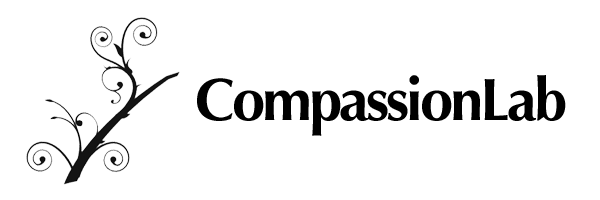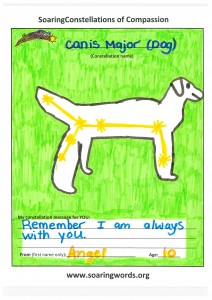Insights and inspiration about compassion at work from members of the CompassionLab and our guests.
Considering Compassion in A Quartet that Went from Quality to Quarreling
By Jed Johnson
CompassionLab Intern, 2014-2015
During high school, as a prospective conservatory-bound violinist, I was constantly practicing etudes, traveling to solo competitions, and, for a bit of extra cash, gigging with my string quartet. We had started performing together during my sophomore year and got along extremely well, grabbing Sunday brunch before rehearsals and having weekly movie nights. After months of doing this, something changed. Our violist, at first agreeable and performing well, became withdrawn and difficult to be around. The rest of the quartet began to feel that our violist wasn’t putting in the effort he needed to perform at his best, while his newly surfaced negative attitude was proving difficult to shake off the rest of us. Nevertheless, we tried to function as usual, as our performances and competitions increased with our popularity in the community where I grew up.
One particular September afternoon during my senior year, after snippy comments from our violist had set our tempers aflare, we were driving to a gig in the next town, jaws clenched, not speaking to one another. At the gig, which was a wedding, we were so unbelievably frustrated with our violist that I felt sick while performing Canon in D and the rest of the wedding repertory. To me, there was something so fundamentally wrong about music making me feel worse instead of better, which was occurring because of my frustration with our violist. Looking back on this day, I wonder to myself how a once successful group of friends who accomplished so much with enthusiasm and smiles turned to make everyone, including myself, harbor such negative emotions like annoyance, contempt, and frustration.
Fast forward three years later to the present, where I’m an undergraduate studying psychology at the University of Michigan. Interestingly enough, it was through a series of coincidences that began with music at the university with The Michigan Pops Orchestra that led me to volunteer teaching music in Brazil, leading me to raise money for that project through an organization which informed me about the Center for Positive Organizations, launching my studies in positive organizational scholarship over the past summer and now to the Compassion Lab at the Ross School of Business. Compassion, as defined by the lab, is “an interpersonal process involving the noticing, feeling, sensemaking, and acting that alleviates the suffering of another person” (Dutton, Workman, Hardin, 2014). What drew me strongly to the study of compassion was the focus on noticing suffering and empathizing with those who are suffering. In retrospect, I can see how this relates to my experience in my quartet, in itself a very small organization, in that we were suffering as a result of what could have been a reaction to suffering from our violist.
In learning about the scholarship already present in the study of compassion, I discovered that my quartet was not alone in having many negative emotions. In an article published in Organization Science, a study done with several professional orchestras in Great Britain demonstrates how the toxicity of delayed decision making and communication negatively affects the health and morale of an organization (Maitlis & Ozcelik, 2004). Figure 1 (Cycles of Emotion and Action in Toxic Decision Processes) shows the cycling of negative emotions arising from hot issues and actions that were, in the study, inappropriately executed to deal with the original issue.
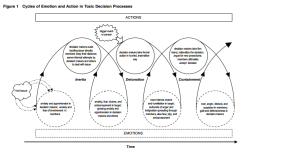
Our original issue, in my quartet, was the poor performance and negative attitude of our violist. Since I came from a small town and a small music program, there was no other violist that I could have replaced ours with that could perform our repertoire, meaning we had no other option put to perform with our violist. As such, we were stuck at a point in the cycle before detonation, meaning we were perpetually experiencing negative emotions in our quartet and not resolving our problems. Knowing how toxic decision processes work now through this cycle, I would have tried to ameliorate the anxiety and apprehension that we experienced in dealing with the ‘hot issue’ of our violist’s poor attitude, to avoid the continual inertia of negative emotions we experienced in this quartet.
Since high school I’ve been able to maintain an active presence in the musical community here in Ann Arbor, performing with orchestras, taking lessons, and most meaningfully to me being part of a different string quartet. My high school quartet was never able to regain the rapport we once had, making our rehearsals become an unwanted obligation and our performances lacking inspiration. Upon graduating, we all went our separate ways and haven’t performed together for several years now. However, with my new quartet and my added knowledge about acting compassionately in the workplace and in life, I’ve had another chance to think about how to act differently in other musical ensembles. Firstly, if ever somebody came into rehearsal less chipper than usual or with a bad attitude, I would ask if something was upsetting them (in terms of studying compassion, prompting the sharing of news), rather than ignoring displays of potential suffering as I had once done. This is a more appropriate action to dealing with a ‘hot issue’ than a ‘business as usual’ approach and does not allow for a cycle of negative emotions and actions to occur., in my quartet, was the poor performance and negative attitude of our violist. Since I came from a small town and a small music program, there was no other violist that I could have replaced ours with that could perform our repertoire, meaning we had no other option put to perform with our violist. As such, we were stuck at a point in the cycle before detonation, meaning we were perpetually experiencing negative emotions in our quartet and not resolving our problems. Knowing how toxic decision processes work now through this cycle, I would have tried to ameliorate the anxiety and apprehension that we experienced in dealing with the ‘hot issue’ of our violist’s poor attitude, to avoid the continual inertia of negative emotions we experienced in this quartet.
People can accomplish tasks together and ‘get the job done’ while withholding their emotions and bottling up unpleasant feelings, as my high school quartet was able to do. However, the difference between my functioning high school quartet and my connected, attuned, and empathetic college quartet is that between polite clapping and a roaring standing ovation. Noticing compassion and changing actions accordingly can dramatically alter the morale, and by extension the productivity, of an organization, whether it’s a string quartet, a symphony orchestra, a law firm, or a planning committee. In this way, negative emotions can be dealt with appropriately and pave the way for positive, enriching experiences to be created.
CompassionLab in Dialogue with His Holiness the Dalai Lama
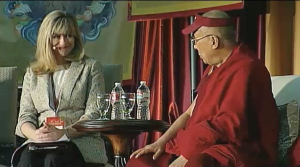 CompassionLab’s Monica Worline presented a summary of CompassionLab research to His Holiness the Dalai Lama in a dialogue devoted to the topic of compassion and ethics in business, hosted by Santa Clara University and Stanford’s Center for Compassion and Altruism Research and Education on February 24, 2014.
CompassionLab’s Monica Worline presented a summary of CompassionLab research to His Holiness the Dalai Lama in a dialogue devoted to the topic of compassion and ethics in business, hosted by Santa Clara University and Stanford’s Center for Compassion and Altruism Research and Education on February 24, 2014.
In his remarks, His Holiness commented that it is part of the human project to advance the idea of compassion beyond simply a felt concern. Compassion is often defined as an affective state that connects us to the well-being of others. In the dialogue, His Holiness pointed to research that shows that animals respond to the well-being of others in their groups, showing that an orientation toward others’ well-being is fundamental to the evolved biology of social life. And yet, the expression of compassion in action—especially for others who are far removed from our kin groups or tribes—is something that human beings must nurture by working together.
Understanding compassion in organizations as a collective accomplishment is where CompassionLab’s fifteen years of research adds a unique dimension to the ongoing work of many scientists who are researching the ways that compassion shapes our brains, minds, and hearts. CompassionLab has defined compassion in organizations as a four-part collective accomplishment that involves 1) noticing suffering; 2) making sense of the situation in way that 3) prompts feelings of empathy rather than aversion or indifference, and 4) acting to alleviate suffering. We look for ways that the basic individual impulse toward compassion is amplified or inhibited by organizational structures and processes into compassion organizing .
Here are three of the organizational factors that can amplify compassion as a collective accomplishment, as Monica described them in dialogue with His Holiness:
- Amplifier 1: Networks that spread the call for compassion broadly
In order for the suffering of members to become vivid in an organization, it has to take on a social reality. Networks—clusters of people who share a common interest within the organization—help suffering take on social reality and amplify calls for compassion. For example, in the case of a fire that destroyed the homes of some organization members, we found that the physical presence of someone in distress helped mobilize many networks within the organization, and that as calls for assistance went out to multiple networks, more resources were unleashed to help alleviate suffering. - Amplifier 2: Leadership modeling and messages
Messages and modeling from leaders can amplify the feeling of compassion and help it take on collective significance. In the case of the fire, the leader of the organization interrupted a large public event to draw attention to the need for compassion and to reinforce the value of coming together as a community to help. He also gave a donation on the spot to someone in the audience who was collecting money, modeling action to pave the way for others. - Amplifier 3: Routines that support regularized and coordinated action
While we may not think of routines as related compassion, this aspect of organizations is perhaps the most under-appreciated amplifier of compassionate action. Routines are repeated, recognizable ways that people work together to get things done. When routines can be put in the service of compassion, they help people more easily know what to do. For instance in the case of the fire, the organization had strong routines for global citizenship and volunteering, so members had established, practiced ways of coordinating to help others in need. The organization also had communication routines that made it legitimate and easy to use formal communication channels to notify others about harm, speeding up coordination. And finally, selection routines that emphasize fit with the organization and employee support routines that free up resources when people are in need have been demonstrated to help amplify compassion.
Though we would like to think that because we share a basic human impulse toward compassion, we would all respond this way, CompassionLab research demonstrates that compassion as a collective accomplishment can’t be taken for granted. In contrast with the example above, we experienced a different organization in the same industry with many of the same organizational features where one member lost everything in a fire, but we found no coordinated expression of compassion in action.
In her dialogue with His Holiness, Monica described three inhibitors that block individual feelings of compassion from becoming organized into action:
- Inhibitor 1: The difficulty of noticing distress in organizations
In this second case of an organization member who lost her home in a fire, concerns about professional reputation prevented the individual from seeking support at work. Many in the organization never knew about the fire, and even close colleagues did not know about it for weeks after it happened, inhibiting their ability to respond. Our work has shown that it is far more difficult to perceive suffering in organizations than we might assume. Reputational concerns and emotional display rules that limit us from expressing loss or sorrow also stop us from responding to suffering. - Inhibitor 2: Concerns about equity and rigid policies that limit discretion
Even in organizations that value compassion, we find that a significant inhibitor to the collective accomplishment of compassion is a concern from leaders or managers that they will be seen as “weak,” or that if they express compassion to one member of the organization others will take advantage of them later. In the case of the fire, the organization had a full-service hotel used to house executives. The director of the hospitality unit refused to grant temporary housing to those affected by the fire, because the policy of the organization stated that the housing was to be used for executives only. The leader of the unit was worried that this exception would open the door to many other requests. This example demonstrates that even for people who feel empathy and concern—as this unit director did—organizational policies that limit discretion, coupled with concern about being taken advantage of in the future, can limit compassionate action. - Inhibitor 3: Lack of shared values about the importance of common humanity
A third inhibitor lurks in a lack of shared value on the importance of common humanity. In the case of the fire where no compassion organizing occurred, some colleagues expressed the belief that it would hinder their work if they were expected to be kind or respond to colleagues in need. When the fact of the shared fate of people in the organization doesn’t translate into a shared value for taking care of one another, we are often left feeling helpless in organizing others to respond to pain.
The presence of these types of inhibitors in our organizations demonstrates that compassion organizing is not a given, nor is it a coincidence. Rather, it is skilled action that involves fundamentals of organizations such as networks, values, routines, and leadership. The more that we can discover the amplifiers to compassion, and remove the inhibitors, the more that we will realize the capacity we all have to enter the heart of suffering together and emerge collectively showing our glorious hearts of compassion.
To read more about networks, routines, and values as the social architecture of compassion: Dutton, Worline, Frost, & Lilius. Administrative Science Quarterly, 51 (2006): 59–96
Constellations of Compassion 3 – For Children
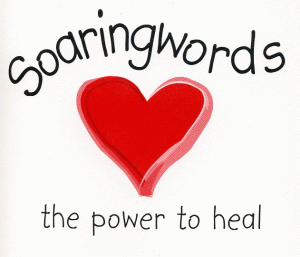 This is the third of a series of three articles co-created by the CompassionLab and Soaringwords for children and adults grappling with serious illness. This is dedicated especially to children.
This is the third of a series of three articles co-created by the CompassionLab and Soaringwords for children and adults grappling with serious illness. This is dedicated especially to children.
Hope and Light
For centuries, people have found hope as they gazed at the night sky and were able to recognize clusters of stars known as constellations. In ancient times, people actually relied on constellations in the night sky as a celestial navigation system, the original global positioning device.
When you are in the hospital it is easy to feel sad. We invite you to think about constellations and create SoaringConstellations messages and artwork to decorate hospital rooms in children’s hospitals around the world. Just like constellations have been giving travelers direction, clarity and comfort when they looked up into the night sky, you will become a source of light and hope when you make a SoaringConstellation message and artwork for an ill child. This kind action will help him or her feel cared for and supported.
Have you have ever looked out your window at the stars? Or have you ever stood outside at night and looked up at the sky? Recognizing constellations helps us to find patterns in the stars. In fact, the word Zodiac actually means circle of animals, because many of the constellations are shaped like animals.
Here are some of our favorite animal constellations.
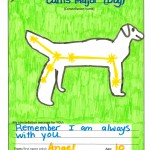 Canis Major, the Greater Dog, is located at the feet of the constellation Orion, the Great Hunter. The single star Sirius (which means dog) is the brightest star in the sky, twice as large as the Sun. It is also the sixth closest star to Earth, 8.65 light years away. Dogs are often called “man’s best friend” because of their loyalty, so we think this is a great constellation to share with an ill child.
Canis Major, the Greater Dog, is located at the feet of the constellation Orion, the Great Hunter. The single star Sirius (which means dog) is the brightest star in the sky, twice as large as the Sun. It is also the sixth closest star to Earth, 8.65 light years away. Dogs are often called “man’s best friend” because of their loyalty, so we think this is a great constellation to share with an ill child.
Delphinus is the dolphin constellation. Dolphins are really smart and like to play in groups so the playful energy of this constellation is sure to bring a smile to hospitalized children.
Cancer is the crab constellation. This is a useful constellation for hospitalized children to think about because even though crabs are funny to watch as they zip along the ocean, they move very quickly and get things done.
Taurus is the Bull, a good constellation to give strength to a hospitalized child because the bull is tough and strong.
 Aquila is the eagle constellation, a high soaring bird. This is a wonderful constellation to inspire an ill child to let his or her imagination fly above daily hospital procedures and think about adventures in the great outdoors. Aquila is perched in the Milky Way.
Aquila is the eagle constellation, a high soaring bird. This is a wonderful constellation to inspire an ill child to let his or her imagination fly above daily hospital procedures and think about adventures in the great outdoors. Aquila is perched in the Milky Way.
Ursa Major, the Great Bear, is a cool constellation because everyone loves a big bear hug. An interesting fact about Ursa Major is that it has another more famous constellation right inside of it which is called the Big Dipper because it is shaped in the form of a big dipping spoon. Everyone likes a big bear hug and the dipper can pour creativity and kindness into someone’s day.
Pegasus is the winged horse who carried Zeus’ thunderbolts. Four stars in Pegasus form the Great Square of Pegasus. Just like Orion’s belt this cluster of stars is easy to find and useful for getting your bearings.
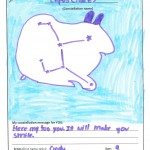 Lepus is the hare (rabbit) constellation located at the feet of Orion the hunter, and right in front of the nose of Canis Major, the hunting dog. It is a bright crimson star, the color is intensified by a surrounding cloud of dust. Rabbits are cuddly and soft and their noses twitch in the cutest way.
Lepus is the hare (rabbit) constellation located at the feet of Orion the hunter, and right in front of the nose of Canis Major, the hunting dog. It is a bright crimson star, the color is intensified by a surrounding cloud of dust. Rabbits are cuddly and soft and their noses twitch in the cutest way.
Leo, the lion, is a group of large, bright stars that was recognized as a constellation 5,000 years ago in Mesopotamia. Leo contains many bright galaxies. Lions are regarded as the “king of the jungle” so a lion constellation will inspire strength and courage.
We hope that you will enjoy learning more about these animal constellations and sharing your creativity with hospitalized children. By playing with this idea of constellations we hope that you will become a guiding light to others and also find kindness from others in your travels.
Constellations of Compassion 2 – Finding Meaning
 This is the second of a series of three articles co-created by the CompassionLab and Soaringwords for children and adults grappling with serious illness.
This is the second of a series of three articles co-created by the CompassionLab and Soaringwords for children and adults grappling with serious illness.
Looking for meaning
When you gaze into the night sky, you can take strength discovering that the possibility of giving and receiving compassion is as boundless as the stars.
People grappling with serious illness tend to be downtrodden. If you glance around the waiting room or hospital lounge you may notice many people with slumped shoulders or patients and family members looking down. Often times, people do not make eye contact. Try something totally different today to change this pattern.
Laura King, a positive psychologist, writes about meaning in life. Specifically, she’s empirically tested the theory of object coherence, known as pattern detection. Her research shows that when people encounter a pattern, this recognition boosts well-being and gives them a sense of control. We invite you to look for patterns of kindness and love. By finding these kind of patterns we hope you will experience more well-being. For example, by using constellations as your guide, you can become a constellation of compassion for others, radiating light and kindness. Naturally, you can also “spot” someone being a compassionate beacon for you.
Here are some examples of giving and receiving compassion using constellation metaphors. Sean’s mother and father needed to keep hope alive as time was running out for their three-year-old son to get a heart transplant. They kept moving forward in the midst of serious challenges and multiple hospitalizations knowing that he needed to get a new heart in order to live. One night, in the middle of a blizzard, they got the phone call that a heart donation match was found. They needed to get to the hospital immediately. Even though it was one in the morning, their neighbors shoveled out the car and drove them twenty miles to the hospital embodying the horsepower of Auriga, the charioteer.
While waiting in the hospital, Sean’s mom sat in a rocking chair singing to her child. She noticed a blinking red light and heard an ambulance far off in the distance. Looking out of the hospital window through the pounding snow, she detected an ambulance speeding over the George Washington Bridge. Just as explorers would look to the North Star for clarity and guidance, in that moment she had a knowingness that the heart that was going to be transplanted into her son was in the ambulance racing towards the hospital. The team of doctors began surgery immediately. The heart was a good match. Sixteen years later, Sean graduated from high school.
If you are bombarded by many medical procedures you can look to Aquila, the Eagle constellation, to inspire you to rise above fear and anxiety to find clarity and calm. Perhaps there is someone in your life that always has the ability to see the big picture, rather than getting mired down in despair. This person can be your Aquila inspiration.
Simple gestures mean so much when people are ill. At times your kind actions can mirror Aquarius, the water carrier as you fill the water pitcher for your family member’s roommate at the same time you are refilling your relative’s water pitcher. Other times a stranger or hospital volunteer may offer you a cool glass of water, quenching your thirst and being a compassionate constellation for you.
Constellations of meaning are all around you. Once you start looking for meaning we are confident that you’ll find it just as simply as seeing the first star in the night sky.
 Soaringwords founder Lisa Buksbaum with Jane Dutton of CompassionLab
Soaringwords founder Lisa Buksbaum with Jane Dutton of CompassionLab
One of the CompassionLab’s community partners is Soaringwords. Soaringwords is a non-profit organization whose mission is to lessen the impact of serious illness by connecting ill children and their families to a community of compassionate volunteers who inspire them to “Never give up!” Soaringwords embraces ill children and families by providing fun, creative and educational activities both in person and online which cultivate joy, hope, laughter and healing.
Constellations of Compassion 1 – Healing
This is the first of a series of three articles co-created by the CompassionLab and Soaringwords for children and adults grappling with serious illness.
An opportunity for healing
The darker the night, the brighter the stars.
For centuries, people have taken comfort and joy as they gazed at the night sky and were able to recognize clusters of stars known as constellations. Prior to the invention of global positioning devices, people actually relied on constellations in the night sky as a celestial navigation system.
In this article we suggest that there are constellations of compassion that can provide direction, clarity and comfort for ill children and their families as they navigate through a serious illness or pediatric hospitalization. Compassion is being able to sense, feel, and act to alleviate another’s suffering. Compassion is an innate quality we all possess. When we see individual constellations such as the North Star, the Big Dipper, Orion’s belt, or Sirius, the dog, we experience micro-moments of joy, the sense of seeing an old friend, something comforting and familiar. We want you to think about constellations of compassion as an opportunity for healing. Once your eyes have been trained to recognize constellations, it becomes easier to pick them out of the swirling mass of glittering stars punctuating the night sky. In the same way, when patients and families learn how to recognize and use compassion, it serves as a global positioning system that can help you feel less isolated by coming closer to the effervescence and healing force of other people.
So here’s the invitation: look up. Look out.
Once you start looking for constellations of compassion you will notice patterns of compassion everywhere. The best thing is that these shared micro-moments of compassion just take a moment to give or receive. Sometimes you are going to be the constellation or shining light for others. Simply by sharing a smile or a kind word you can become the North Star to someone who feels anchorless.
Other times, you will recognize patterns of compassion in others and this will brighten your spirits. For example, a woman who holds open a hospital elevator for you just when the doors are about to close on the large tray with hot beverages you are carrying. Or each day when the man who cleans the floors greets you with the warmest “good morning” and his kindness lights up your entire day.
Trust us, once you start noticing these constellations of compassion, you will begin to see and feel light emanating from people all around you, just like the countless stars in the sky.
We believe that these Constellations of Compassion are like the invisible lines that we often don’t notice which connect us in meaningful ways to what’s important in life. We believe that if you look around you right now, whether you are in the hospital or grappling with serious chronic illness as part of your life or the life of someone you love, you can start to recognize patterns and shining lights all around you.
 Soaringwords founder Lisa Buksbaum with Jane Dutton of CompassionLab
Soaringwords founder Lisa Buksbaum with Jane Dutton of CompassionLab
One of the CompassionLab’s community partners is Soaringwords. Soaringwords is a non-profit organization whose mission is to lessen the impact of serious illness by connecting ill children and their families to a community of compassionate volunteers who inspire them to “Never give up!” Soaringwords embraces ill children and families by providing fun, creative and educational activities both in person and online which cultivate joy, hope, laughter and healing.
Routines Matter for Compassion at Work
 As organizational researchers, we have a unique interest in understanding how compassion can be unleashed or stifled in human communities. An organizational lens attunes us to the important role played by routines and practices in “grooving” the ways we interact with one another. By routines we mean the recurring, repeated patterns of action that typify a particular organization or unit (Feldman & Pentland, 2003). Many organizational researchers think routines are key to an organization’s capability to reliably produce products and services (e.g., Nelson & Winter, 1982) and we see routines as part of the key to understanding an organization’s one time (Dutton et al, 2006) or ongoing capability for compassion (Lilius et al., 2011; Grant et al., 2008).
As organizational researchers, we have a unique interest in understanding how compassion can be unleashed or stifled in human communities. An organizational lens attunes us to the important role played by routines and practices in “grooving” the ways we interact with one another. By routines we mean the recurring, repeated patterns of action that typify a particular organization or unit (Feldman & Pentland, 2003). Many organizational researchers think routines are key to an organization’s capability to reliably produce products and services (e.g., Nelson & Winter, 1982) and we see routines as part of the key to understanding an organization’s one time (Dutton et al, 2006) or ongoing capability for compassion (Lilius et al., 2011; Grant et al., 2008).
When thinking of which routines matter for compassion, our research and the research of others (particularly the wonderful dissertation research by Laura McLelland suggest that 3 clusters of routines are particularly important.
Selection and reward routines: Does your organization have reliable means for identifying individuals who are likely to be relationally skilled and empathetic? Are these the people who are selected as employees? When people help in a skilled fashion, are they rewarded for helping each other?
Socialization routines: Are people brought on board in a way that it is easy for them to connect to one another in meaningful ways? For example, are newcomers quickly connected to people who can help them do their work and are they introduced in ways that facilitate identification of authentic strengths (Baker & Dutton, 2006)?
Support routines: Does the organizations have routines that facilitate employee-to-employee giving when an employee is suffering in some way? These kinds of routines can include routinized ways of notifying others if an employee is in need and also providing timely and relatively easy access to resources that could meet the need.
Routines matter for people at work who are in pain, because they facilitate ways for others to notice, feel and respond. We hope you are working in an organization where these forms of routine readiness are present and well-practiced.
If you wish to gauge how likely your organization is to be compassionate, take the compassionate organizations quiz.
References
Baker, W. and J. Dutton. (2006). Enabling Positive Social Capital. In J. Dutton and B. Ragins (eds.) Exploring Positive Relationships at Work: Building a Theoretical and Research Foundation (Lawrence Erlbaum Publishers).
Dutton, J., M. Worline, P. Frost and J. Lilius. (2006) Explaining Compassion Organizing, Administrative Science Quarterly, 51, 1, 59-96.
Feldman, M. and B. Pentland. (2003) Reconceptualizing organizational routines as a source of flexibility and change. Administrative Science Quarterly, 28: 98-118.
Grant, A.M., J. Dutton, and B. Rosso. (2008). Giving Commitment: Employee Support Programs and the Prosocial Sensemaking Process, Academy of Management Journal, 51, 5, 898-918.
Lilius, J. M. Worline, J. Dutton, J. Kanov, and S. Maitlis. (2011). Understanding Compassion Capability, Human Relations, 64, 7, 873-891.
McClelland, L.E. (2012). From Compassion to Satisfaction: Examining the Relationship between Routines that Facilitate Compassion and Quality of Service. Dissertation, Emory University.
Nelson, R.R. and S. G Winter. (1982). The Schumperterian tradeoff revisited. American Economic Review, 72: 114-133.
Future of Compassion in Business – Video
In this video discussing the future of care and compassion in business, Dr. Jane Dutton discusses this as a particularly generative time for thinking about compassion in business, with new possibilities and organizations emerging to generate scientific and social advances in the study and practice of compassion.
New scientific interest, including a Center for Compassion and Altruism Research at Stanford University, is fueled by rapid advances in the study of neuroscience and related fields that promise to tell us more about the biological and psychological underpinnings of empathy. These advances are fueled and supported by leaders who understand a need for developing compassion in business.
We also find a groundswell of interest in fostering compassionate institutions, including compassionate cities, compassionate universities, and compassionate organizations of all kinds, led by the energy surrounding Karen Armstrong’s Charter for Compassion, which promotes compassion as a global force for well-being.
To learn more about these emerging social movements, visit the International Working Group of Compassionate Organizations dedicated to fostering compassionate organizations, and the Compassion Action Network, dedicated to promoting compassion as a guiding principle.
Video introduction to Care and Compassion in Organizations
 In this short video introduction, Professor Jane Dutton welcomes you to a special issue of the Academy of Management Review focused on understanding and creating compassionate organizations. The special issue features nine highly diverse papers selected from over ninety-six submissions in a rigorous peer review process. The volume extends organizational theory with a focus on compassion that extends from individual-level topics to group-level dynamics and organization-level impacts.
In this short video introduction, Professor Jane Dutton welcomes you to a special issue of the Academy of Management Review focused on understanding and creating compassionate organizations. The special issue features nine highly diverse papers selected from over ninety-six submissions in a rigorous peer review process. The volume extends organizational theory with a focus on compassion that extends from individual-level topics to group-level dynamics and organization-level impacts.
Jane shares her excitement about the richness that this lens on organizations brings to the broader field of organizational studies, particularly as we learn more in the social sciences about how humans are hard-wired to be other-serving just as we are hard-wired to be self-serving.
You can also read the transcript of a panel discussion with editors and authors of the issue, raising important questions about the value of this lens and the practical as well as theoretical implications of these topics for business.
Take the Compassionate Organizations Quiz
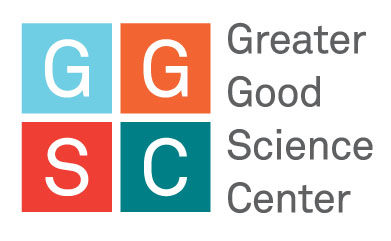 While we often think about compassion as an individual quality, the organizations where we spend our time—such as workplaces, schools, places of worship, and community centers—can actually impact whether and how we respond to someone in distress.
While we often think about compassion as an individual quality, the organizations where we spend our time—such as workplaces, schools, places of worship, and community centers—can actually impact whether and how we respond to someone in distress.
CompassionLab collaborated with the Greater Good Science Center to create this quiz on Compassion in Organizations.
The quiz measures the level of compassion in an organization. It is based on more than 10 years of research on compassion and organizations by the research collaborative CompassionLab and the Center for Positive Organizational Scholarship at the University of Michigan Ross School of Business.
One highlight from Wisdom 2.0
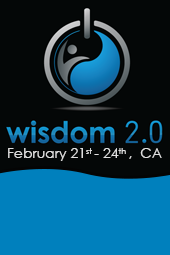 Wisdom 2.0 is the name given to a gathering this weekend of people interested in the intersection of new technologies and old wisdom traditions. Many speakers highlighted aspects of mindfulness and emphasized the importance of compassion as one of the taproots of humanity. One highlight of the conference for those of us interested in the expression of compassion at work was an onstage interview with Jeff Weiner, CEO of LinkedIn, who spoke extensively about his perspective on compassion and leadership. Jeff wrote a LinkedIn post recently, entitled Managing Compassionately, in which he describes some of the development of his perspective on compassion and leadership. Jeff emphasized the power of empathy plus action to counteract our typical expectation that others will do things in the same way we would do them, and discussed the need for coaching and deep engagement to overtake tactics and problem solving when a leader truly commits to leading with compassion.
Wisdom 2.0 is the name given to a gathering this weekend of people interested in the intersection of new technologies and old wisdom traditions. Many speakers highlighted aspects of mindfulness and emphasized the importance of compassion as one of the taproots of humanity. One highlight of the conference for those of us interested in the expression of compassion at work was an onstage interview with Jeff Weiner, CEO of LinkedIn, who spoke extensively about his perspective on compassion and leadership. Jeff wrote a LinkedIn post recently, entitled Managing Compassionately, in which he describes some of the development of his perspective on compassion and leadership. Jeff emphasized the power of empathy plus action to counteract our typical expectation that others will do things in the same way we would do them, and discussed the need for coaching and deep engagement to overtake tactics and problem solving when a leader truly commits to leading with compassion.
